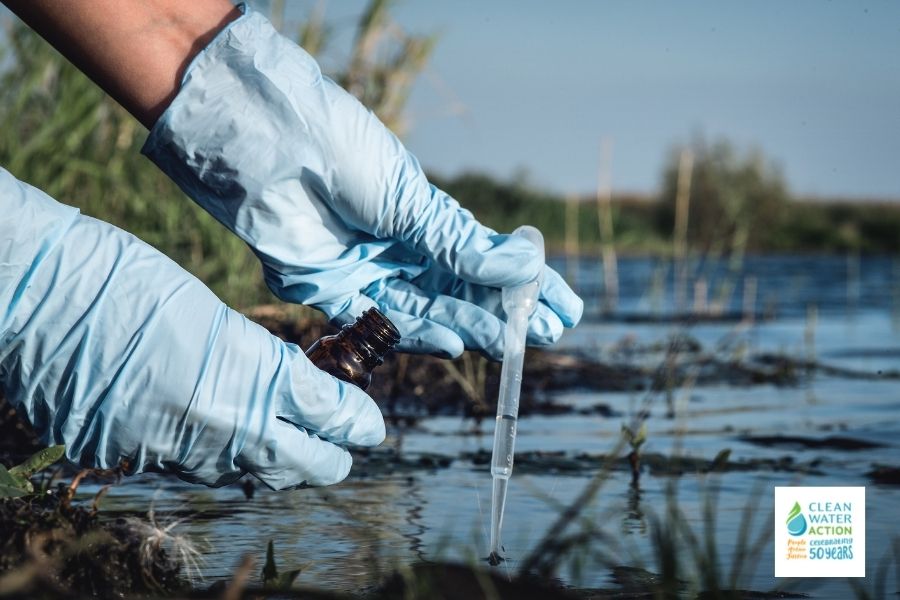
Last week the U.S. The Environmental Protection Agency (EPA) issued a memo detailing how the agency will use its water pollution permitting program to limit discharges of PFAS to rivers, streams, lakes, and other water bodies. As we’ve written before on our blog, the Clean Water Act (CWA) has many tools that can—and should—be used to keep these toxic fluorinated “forever chemicals” out of our water. Using the CWA to address PFAS has many benefits, including shifting the burden away from drinking water systems and communities to clean-up PFAS and back on to the industries that financially benefit from using these chemicals.
Last week’s memo is a welcome step in delivering on one of the promises in EPA’s PFAS Strategic Roadmap, but more urgent action is needed to prevent PFAS from polluting our nation’s water bodies, especially vital drinking water sources.
The National Pollutant Discharge Elimination System (NPDES) is the Backbone of the Clean Water Act.
The NPDES program is the main tool EPA and states use to control point sources of water pollution, such as discharges from a sewage treatment plant or discharges from an industrial facility like a petroleum refinery or a coal-fired power plant. Many industries are known or suspected of discharging PFAS to surface waters, including but not limited to airports, refineries, pulp/paper mills, textile mills, organic chemicals, plastics and synthetic fibers manufacturers, metal finishers, and electroplating facilities. Despite the large number of industries that discharge PFAS, there are no federal water pollution standards to control these sources, though EPA is in the early stages of proposing PFAS pollution standards for some types of industrial facilities.
How EPA Will Address PFAS in NPDES Permits
At industrial facilities that are known or suspected of discharging PFAS into water bodies, EPA will require agency issued NPDES permits to include the following permit conditions:
-
Effluent monitoring for the 40 PFAS compounds detectable by draft analytical method 1633;
-
Best Management Practices (BMPs) to prevent pollution such as eliminationating the use of PFAS at industrial facilities or removing PFAS-contaminated equipment from legacy sites.
EPA’s memo also requires BMPs in stormwater permits to eliminate the use of fire-fighting foams containing PFOA and PFOS, requires wastewater treatment plants to monitor for PFAS and to identify and reduce sources of PFAS from industrial users that send their wastewater to wastewater treatment plants.
For all industrial, municipal, and stormwater draft permits with proposed conditions to address PFAS, EPA Regions will be expected to notify downstream drinking water systems and to assist them in accessing discharge monitoring data for these permits. Some states like Colorado already notify downstream drinking water systems when there are NPDES permits upstream open for public comment. There is growing interest among water utilities in engaging with EPA and state permit writers on using the NPDES program to keep PFAS out of drinking water sources. Clean Water Action recently co-led a well attended workshop at an American Water Works Association (AWWA) conference on how water utilities can use the tools of the Clean Water Act to protect drinking water sources from PFAS.
EPA Must Move Quickly to Issue Enforceable Water Pollution Standards for PFAS
PFAS monitoring and source reduction are important tools for tackling these persistent chemicals, but more regulations are needed. EPA has begun revising technology-based water pollution standards (known as effluent limitation and guidelines, or ELGs) for three industrial sectors—organic chemicals, plastics and synthetic fibers manufacturers, metal finishers, and electroplating facilities—but there are many more industries such as petroleum refineries and landfills that should also been required to drastically reduce or eliminate their PFAS pollution using the best available treatment technologies.
The good news is that states don’t have to wait for EPA action to require polluting industries to limit their discharges of PFAS to water bodies. States like Michigan and Colorado are leading the country in requiring industries to rein in their toxic discharges of PFAS. More states should follow their lead.


